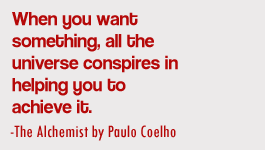
I like making things happen. I like getting stuff done. I like creating positive change. In addition to bringing more peace into my life, the Serenity Prayer has also helped with all of the above. I try to use it as my guide in any given situation, and I’ve noticed that by practicing it, I have become more of a pragmatist. Before proceeding, let me share two things with you: the Serenity Prayer and a definition of pragmatism.
God grant me the serenity to accept the things I cannot change; courage to change the things I can; and wisdom to know the difference.
-Reinhold Niebuhr
pragmatism: a practical, matter-of-fact way of approaching or assessing situations or of solving problems.
(courtesy of thefreedictionary.com)
Although I always have been an idealist and always will be, I place a much greater value on actually doing something in the world. Art certainly enables us to paint a picture of something better in hopes of inspiring the world, and that’s why I try to bring the artist in me to all that I do. But day-to-day reality is where we live. While I believe it’s always important to be filling the gap between what is and what might be, the only way to really get stuff done is to acknowledge what is and operate within the sphere of reality. Not a warped sense of reality. Just reality. In any given moment, you have choices available to you. Making a decision based on reality is often your best bet at making the best selection or choosing the best course of action.
I want to examine the Serenity Prayer in a slightly different order. To live by it demands three things of us:
Wisdom to know the difference.
This involves two things:
- Knowing what you cannot change
- Knowing what you can change
Some things can be changed, and some things cannot be changed. This is where your attitude and outlook are important. If you’re an optimistic person, you may believe there are more things you have the ability to change than perhaps a pessimistic person. Determining what you can and cannot change is a highly personal thing, unique to each of us. For me, life experience and gut instinct have provided the most help in determining what I can change and what I cannot change. Things I believe I don’t have the power to change:
- Other people’s actions
- Other people’s reactions
- Other people’s deeply held beliefs
- Other people’s interpretations of my actions or words
- Other people’s expectations
These areas can influence a large part of my day-to-day life. Encounters with other people can be the greatest source of happiness and fulfillment but also the greatest source of misery and frustration. The more time I try to spend on changing these things, often the more frustrated and miserable I am.
However, the more time I focus on those things in my life that I can change, typically the more fulfilled and content I am. Things I believe I have the power to change:
- My own actions
- My own reactions
- My own beliefs
- My own interpretations of people’s actions or words
- My own expectations
You can see that much of this boils down to a belief that all I can really change is myself, not other people. That doesn’t mean that my actions, reactions, beliefs, interpretations, and expectations don’t have the potential to influence other people; it just means that change can only come from within someone. I can perhaps play a part in inspiring, encouraging, or influencing, but I cannot make the change myself. That’s far too personal to each individual.
So, what does this mean?
It means that when I’m out driving in Chicago and a driver cuts me off, I can choose to get angry and let that anger ruin my day. Or I can choose to let it go. I cannot control the guy who cut me off, but I can control my own response.
It means that when I am working on a project with someone who complains about everything and never accepts responsibility for their own mistakes, I can choose to either abort the project or minimize my interactions with that person. I cannot make that person stop complaining or make them start accepting responsibility, but I can control my own response.
You get the idea.
Accepting the things I cannot change.
Accepting what I cannot change is hard, but it’s much easier when I’m disciplined enough in any given situation to figure out what cannot be changed. If it’s something I cannot change (see list above), then I try to just let it go. I try to not worry too much about it. I try to not let it control my mood. Again, it’s not easy. But it’s made much easier when I realize I cannot change it. The sooner I accept what I cannot change, the more time I’m left to focus on those things I can change. It’s the wisdom packed into “Let It Be” by The Beatles.
What can you accept and let go?
Having the courage to change the things I can.
Having the courage to change is hard too. But the more time I spend on changing what I can change, the better off I am and the more productive I’m being with my time. There are plenty of things I can change, and much of it relates to my own actions, reactions, beliefs, interpretations, and expectations. There’s an infinite number of things I can create in this world. I can make art. I can work to be a positive force in the lives of other people. I can try to be a light in other people’s lives. And although I cannot change other people, I can certainly be a source of inspiration and encouragement. It gets really exciting when you try to live your life in this realm and try to spend most of your time each day on things you can change. The possibilities become limitless.
What things can you change?
Want Free Updates from Create the Map?
If you’d like to receive free updates, you can subscribe to my email list, subscribe to the RSS feed, or connect on Facebook or Twitter.


Comments on this entry are closed.